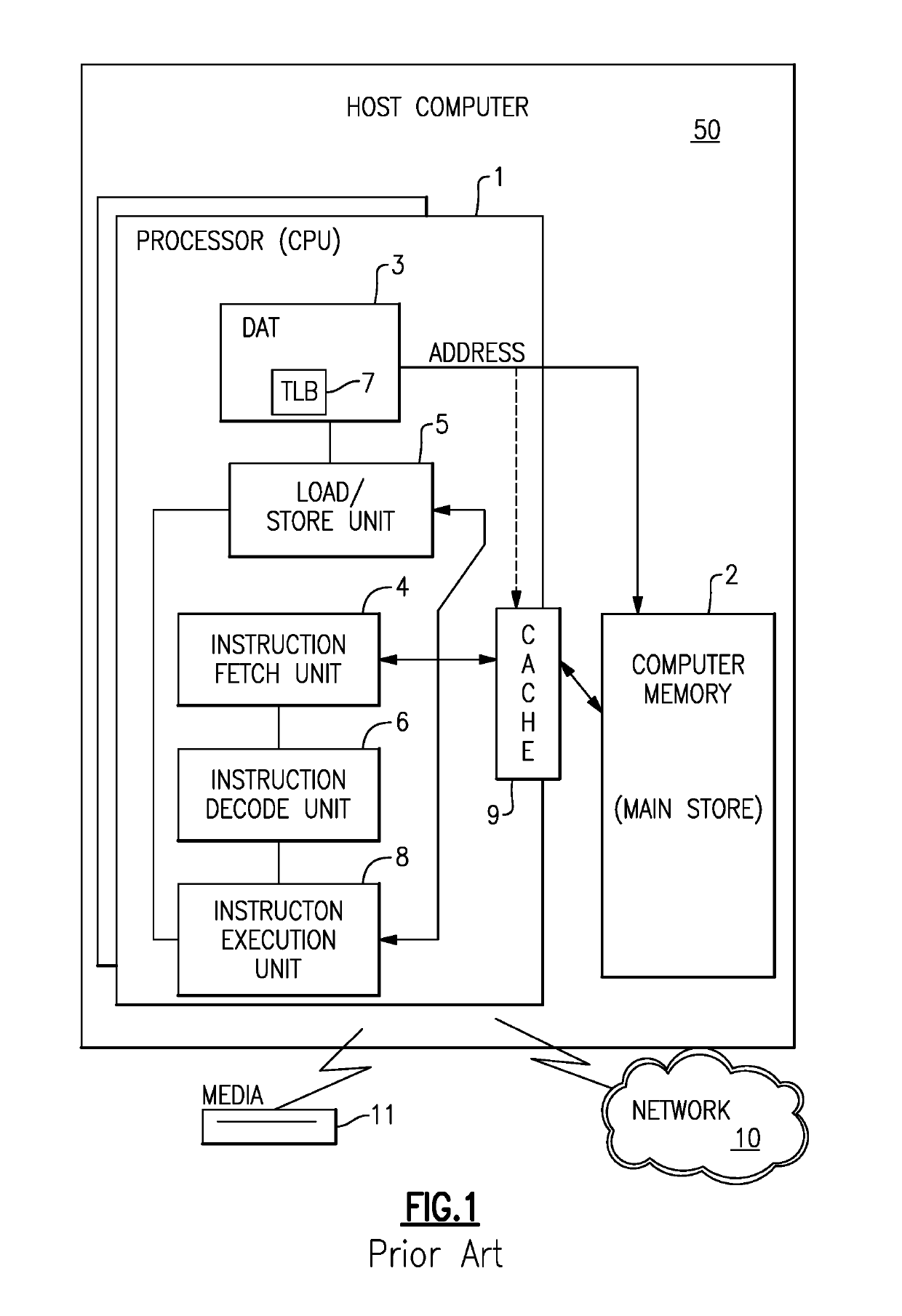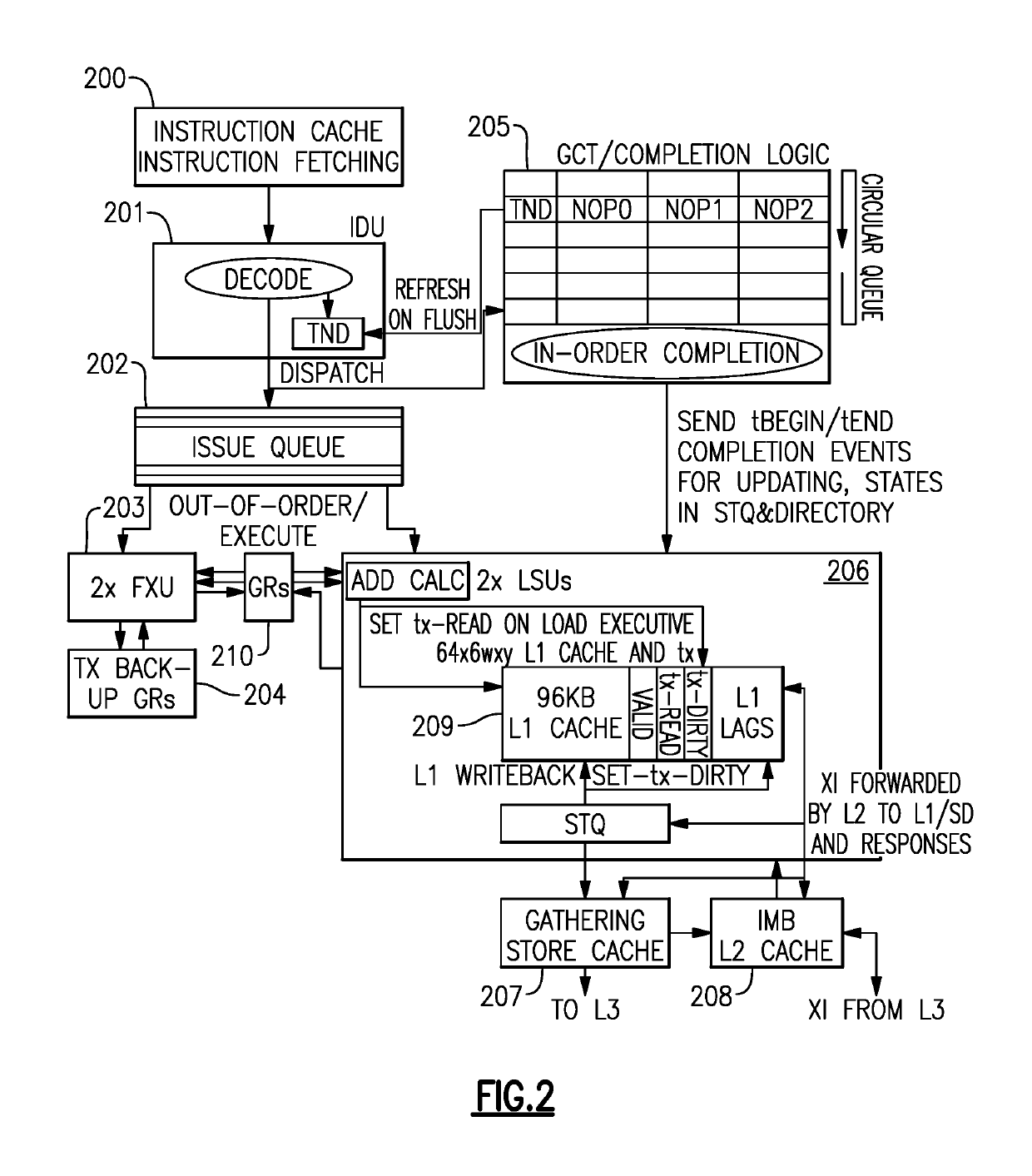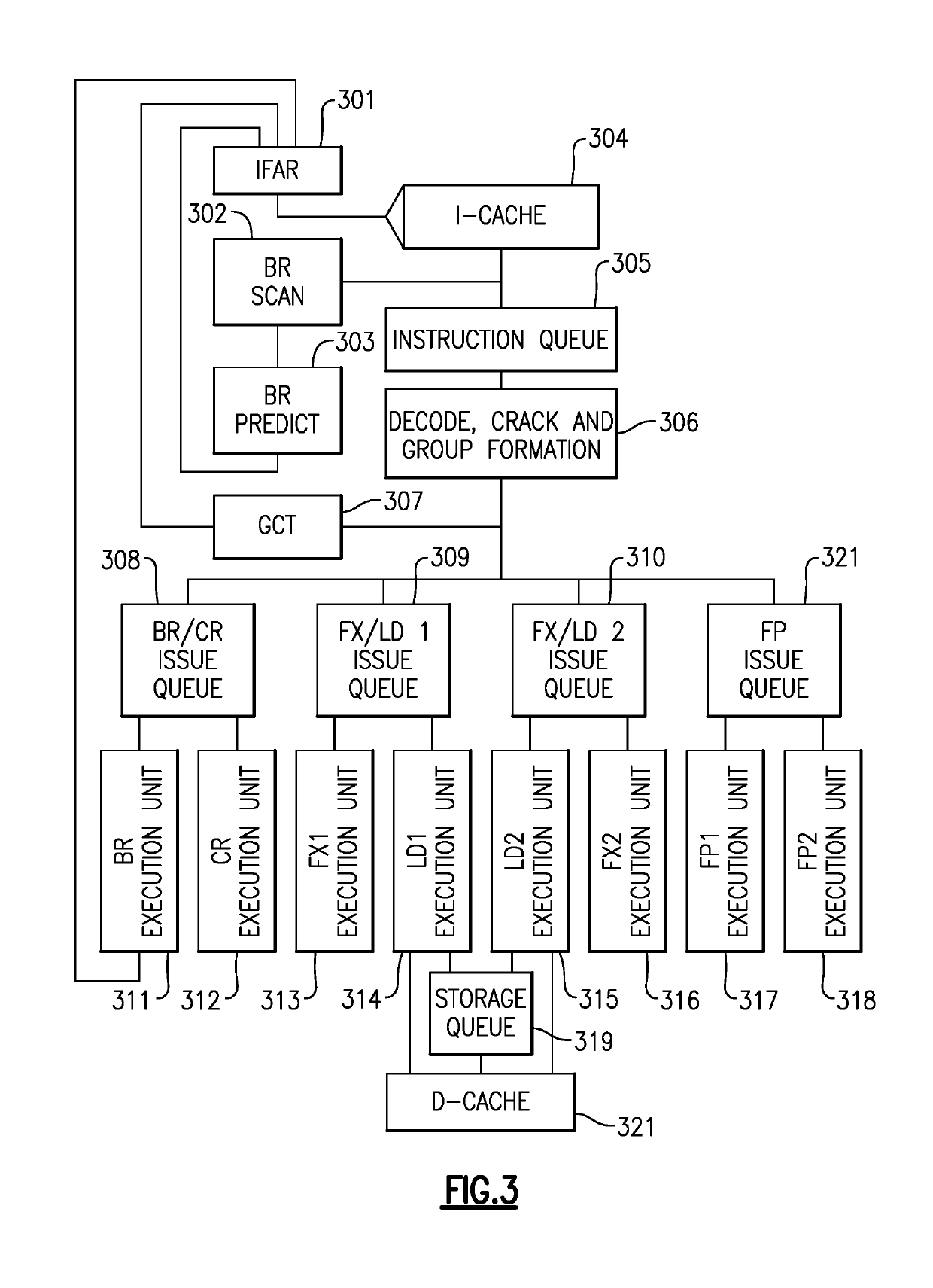Suppressing branch prediction on a repeated execution of an aborted transaction
a branch prediction and aborted transaction technology, applied in the field of transaction memory, can solve problems such as high software scalability burden, sub-linear n-way scaling curve, and high error-prone scalability
- Summary
- Abstract
- Description
- Claims
- Application Information
AI Technical Summary
Benefits of technology
Problems solved by technology
Method used
Image
Examples
Embodiment Construction
[0036]Referring to FIG. 1, representative components of a prior art Host Computer system 50 are portrayed. Other arrangements of components may also be employed in a computer system, which are well known in the art. The representative Host Computer 50 comprises one or more CPUs 1 in communication with main store (Computer Memory 2) as well as I / O interfaces to storage devices 11 and networks 10 for communicating with other computers or SANs and the like. The CPU 1 is compliant with an architecture having an architected instruction set and architected functionality. The CPU 1 may have Dynamic Address Translation (DAT) 3 for transforming program addresses (virtual addresses) into real address of memory. A DAT typically includes a Translation Lookaside Buffer (TLB) 7 for caching translations so that later accesses to the block of computer memory 2 do not require the delay of address translation. Typically a cache 9 is employed between Computer Memory 2 and the Processor 1. The cache 9 ...
PUM
 Login to View More
Login to View More Abstract
Description
Claims
Application Information
 Login to View More
Login to View More - R&D
- Intellectual Property
- Life Sciences
- Materials
- Tech Scout
- Unparalleled Data Quality
- Higher Quality Content
- 60% Fewer Hallucinations
Browse by: Latest US Patents, China's latest patents, Technical Efficacy Thesaurus, Application Domain, Technology Topic, Popular Technical Reports.
© 2025 PatSnap. All rights reserved.Legal|Privacy policy|Modern Slavery Act Transparency Statement|Sitemap|About US| Contact US: help@patsnap.com



